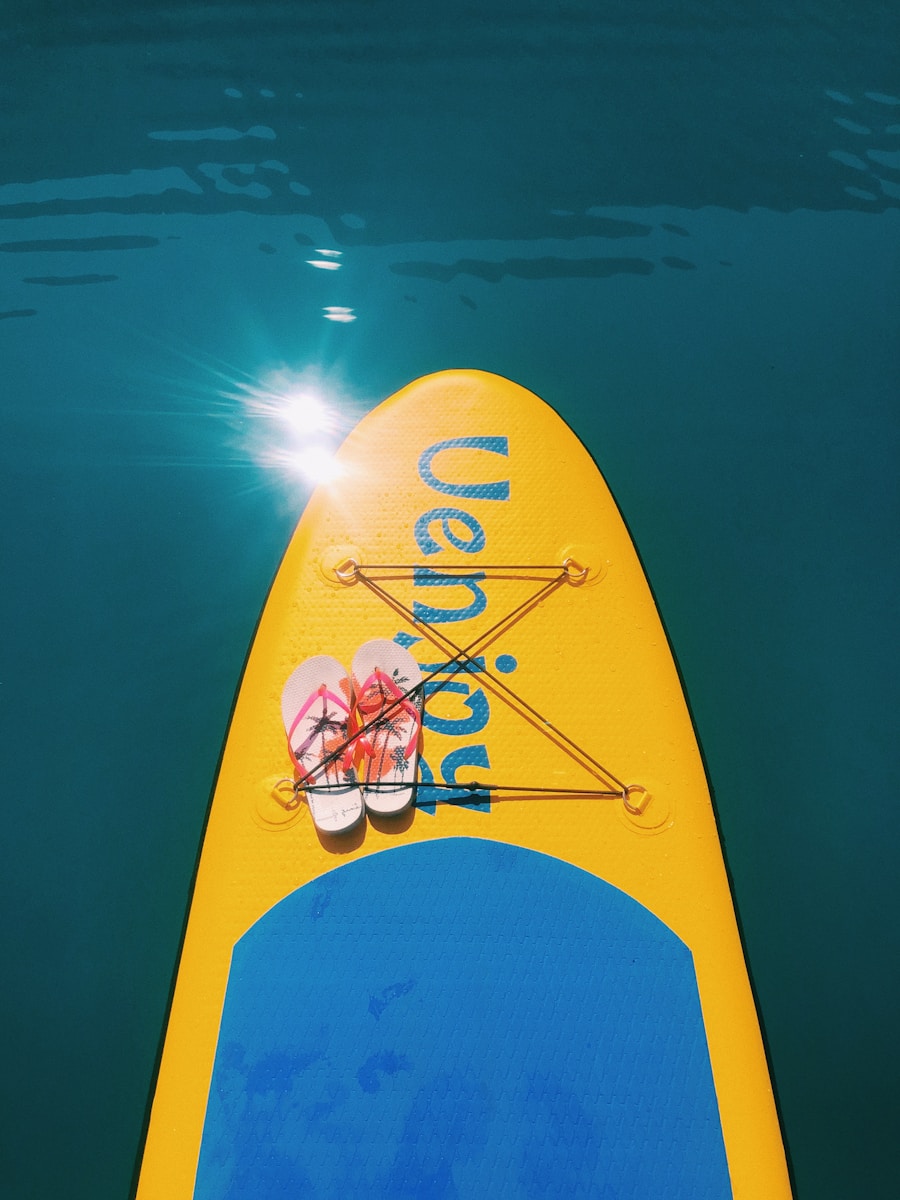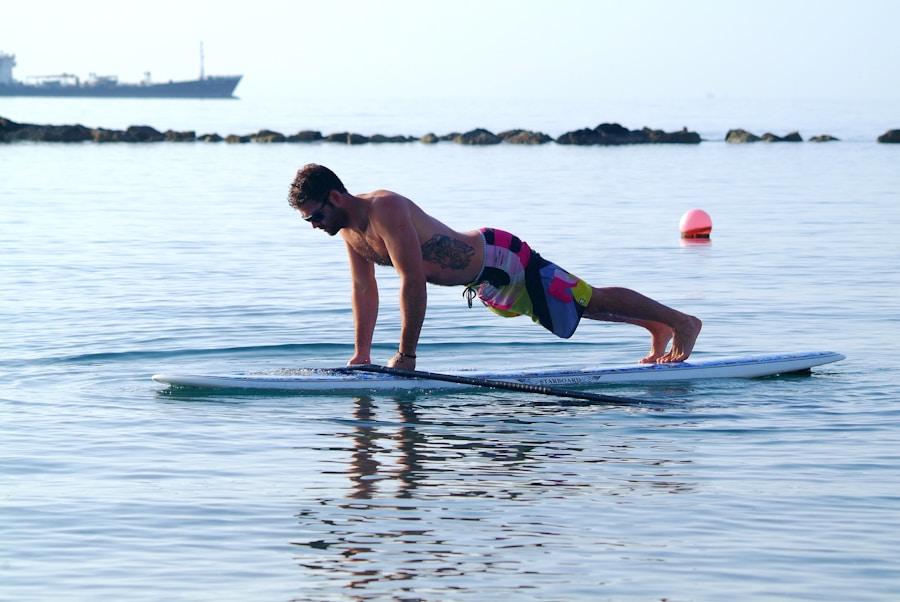Download links
How to install Surfing Makes Waves at Olympics APK?
1. Tap the downloaded Surfing Makes Waves at Olympics APK file.
2. Touch install.
3. Follow the steps on the screen.
Description
Surfing made its Olympic debut at the Tokyo 2020 Games, held in 2021 due to the COVID-19 pandemic. This momentous occasion marked a significant milestone for the sport, which has long been associated with a laid-back lifestyle and a deep connection to nature. The inclusion of surfing in the Olympics not only elevated the sport’s profile on a global scale but also highlighted its rich cultural heritage.
The decision to include surfing in the Olympic program was met with enthusiasm from both athletes and fans alike.
It represented a recognition of the sport’s growing popularity and its ability to attract younger audiences. The International Surfing Association (ISA) played a pivotal role in advocating for surfing’s inclusion, emphasizing its global reach and the vibrant community that surrounds it. The Olympic platform provided an opportunity for surfers to gain recognition beyond their local beaches and competitions, allowing them to showcase their talents on an international stage.
This inclusion not only validated the hard work and dedication of surfers but also opened doors for future generations to pursue the sport at a competitive level.
Key Takeaways
- Surfing’s inclusion in the Olympics marks a significant milestone for the sport, bringing it to a global stage and exposing it to a wider audience.
- The road to Olympic recognition for surfing was a long and challenging journey, with the sport facing various obstacles and criticisms before finally gaining acceptance.
- The impact of surfing’s Olympic debut is expected to increase interest and participation in the sport, particularly in countries where surfing is not traditionally popular.
- Athletes to watch in surfing at the Olympics include seasoned professionals and rising stars who are expected to showcase their skills and compete for medals.
- The cultural significance of surfing at the Olympics highlights the sport’s connection to coastal communities and its representation of a laid-back, outdoor lifestyle.
- The future of surfing in the Olympics holds potential for continued growth and evolution, with the sport likely to inspire a new generation of athletes and fans.
The Road to Olympic Recognition for Surfing
Ancient Roots and Modern Beginnings
Surfing has its roots in ancient Polynesian culture, where it was not only a recreational activity but also a significant part of social and spiritual life. However, it wasn’t until the mid-20th century that surfing began to gain traction as a competitive sport, particularly in California and Hawaii.
Overcoming Obstacles to Gain Acceptance
The establishment of professional surfing competitions in the 1970s laid the groundwork for what would eventually become a global phenomenon. Despite its popularity, gaining acceptance into the Olympic fold proved challenging. The International Surfing Association was formed in 1964, and it has been instrumental in promoting surfing worldwide. Over the years, various attempts were made to secure Olympic status, but these efforts were often met with skepticism from the International Olympic Committee (IOC). Concerns about the sport’s lack of standardized rules and its association with a countercultural lifestyle hindered its acceptance.
A New Era for Surfing
However, as surfing continued to evolve, so did perceptions of the sport. The rise of professional leagues, such as the World Surf League (WSL), helped to establish a more structured competitive framework, demonstrating that surfing could meet the rigorous standards expected by the IOC. In 2016, during the 129th IOC Session in Rio de Janeiro, surfing was officially added to the Olympic program for Tokyo 2020. This decision was influenced by several factors, including the IOC’s desire to attract younger audiences and diversify its offerings.
The Impact of Surfing’s Olympic Debut

The debut of surfing at the Olympics had immediate and far-reaching effects on the sport and its community. For many athletes, competing on such a prestigious platform was a dream come true, providing them with an opportunity to showcase their skills to a global audience. The event attracted significant media attention, bringing surfing into homes around the world and introducing new fans to the sport.
This exposure is likely to have lasting effects on participation rates, as young people inspired by Olympic athletes may be more inclined to take up surfing themselves. Moreover, the Olympic spotlight has led to increased investment in surfing infrastructure and training programs. National governing bodies are now more motivated to support their athletes through funding and resources, recognizing that success on an Olympic stage can elevate a country’s standing in the global surfing community.
This investment is crucial for developing talent and ensuring that aspiring surfers have access to coaching, facilities, and competitive opportunities. As countries strive for medals in future Olympic Games, we can expect to see a surge in grassroots initiatives aimed at nurturing young surfers. The impact of surfing’s Olympic debut extends beyond just athletes and national federations; it also influences local economies and tourism.
Coastal towns that host surf competitions often see an influx of visitors eager to experience the waves and culture associated with surfing. The Olympics provided an opportunity for these locations to showcase their unique offerings on an international stage, potentially leading to increased tourism revenue. As more people become interested in surfing, local businesses may benefit from heightened demand for surf lessons, equipment rentals, and related services.
The Athletes to Watch in Surfing at the Olympics
| Athlete | Nationality | Age | Previous Achievements |
|---|---|---|---|
| Carissa Moore | United States | 28 | 4-time World Surf League Champion |
| Italo Ferreira | Brazil | 27 | 2019 World Surf League Champion |
| Stephanie Gilmore | Australia | 33 | 7-time World Surf League Champion |
| Gabriel Medina | Brazil | 27 | 2-time World Surf League Champion |
As surfing continues to grow in popularity, several athletes have emerged as standout competitors who are expected to make waves at future Olympic events. One such athlete is Carissa Moore from Hawaii, who has been a dominant force in women’s surfing for years. A multiple-time world champion, Moore’s powerful style and competitive spirit make her a formidable contender.
Her success has not only solidified her status as one of the best surfers in history but has also inspired countless young girls to pursue their dreams in a male-dominated sport. On the men’s side, Brazilian surfer Italo Ferreira is another athlete to watch closely. Ferreira’s explosive style and innovative maneuvers have earned him numerous accolades on the World Surf League circuit.
His victory at the Tokyo 2020 Olympics was historic; he became the first-ever Olympic gold medalist in surfing, cementing his place in history while also showcasing Brazil’s growing influence in the sport. Ferreira’s charismatic personality and dedication to his craft resonate with fans worldwide, making him a key figure in promoting surfing’s appeal. Other notable athletes include American surfer Kolohe Andino and Australian competitor Sally Fitzgibbons.
Andino is known for his progressive approach to surfing and his ability to adapt to various wave conditions, while Fitzgibbons has consistently been one of the top competitors on the women’s tour. Both athletes have demonstrated resilience and determination throughout their careers, making them exciting prospects for future Olympic competitions.
The Cultural Significance of Surfing at the Olympics
Surfing is more than just a sport; it embodies a lifestyle deeply rooted in culture and community. Its inclusion in the Olympics brings this cultural significance into sharper focus, allowing for greater appreciation of its history and values. Surfing has long been associated with freedom, self-expression, and a connection to nature—elements that resonate with many people around the globe.
By showcasing these values on an international stage, the Olympics can help foster a deeper understanding of what surfing represents beyond mere competition. The cultural significance of surfing is particularly evident in its ties to indigenous communities, especially in places like Hawaii where it originated. Traditional Hawaiian surfing, or he’e nalu, is steeped in cultural practices and spiritual beliefs that honor the ocean as a sacred entity.
By including surfing in the Olympics, there is an opportunity to highlight these cultural narratives and educate audiences about their importance. This recognition can help preserve traditional practices while also promoting respect for indigenous cultures within the broader context of global sports. Furthermore, surfing’s inclusion in the Olympics can serve as a platform for addressing pressing social issues such as environmental conservation and climate change.
Surfers are often at the forefront of ocean advocacy due to their intimate relationship with marine environments. By leveraging their visibility during Olympic events, athletes can raise awareness about ocean health and inspire action among fans and policymakers alike. This intersection of sport and activism underscores how surfing can transcend competition and contribute positively to society.
The Future of Surfing in the Olympics

The Rise of Global Competition
As more countries invest in developing their surfing programs, we can expect an increasingly competitive landscape at future Games. The potential for new talent emerging from diverse regions around the world will enrich the sport and create exciting rivalries that captivate audiences.
Maintaining Authenticity in an Olympic Format
Countries like Japan, which hosted the Tokyo 2020 Games, are likely to continue nurturing local talent while also attracting international surfers eager to compete. However, maintaining surfing’s authenticity while adapting it for an Olympic format will be crucial. The essence of surfing lies in its connection to nature and individual expression; thus, any changes made to accommodate competitive standards must respect these core values.
Innovations and Advancements
Striking this balance will require ongoing dialogue between athletes, governing bodies, and environmental advocates to ensure that surfing remains true to its roots even as it evolves within an Olympic framework. Additionally, as technology continues to advance, we may see innovations that enhance both training methods and competition formats. Virtual reality training tools could provide athletes with new ways to refine their skills without being limited by geographical constraints or wave conditions. Moreover, advancements in wave pool technology may lead to more controlled competition environments that can be utilized for future Olympic events or qualifying rounds.
Surfing enthusiasts around the world are eagerly anticipating the debut of surfing in the Olympics. The sport’s inclusion in the prestigious event has been met with excitement and anticipation from both athletes and fans alike. For those looking to get in on the action, Taya365 offers a unique opportunity to win big with their lottery games. With the chance to win exciting prizes, including cash rewards and more, Taya365 is the perfect way to add some extra excitement to the upcoming surfing competitions. Check out this article to learn more about how you can get involved and potentially win big with Taya365.
FAQs
What is surfing in the Olympics?
Surfing made its debut in the Olympic Games at the 2020 Tokyo Olympics. It is a sport where athletes ride on waves using a surfboard, and are judged on their performance.
How is surfing judged in the Olympics?
Surfing in the Olympics is judged based on the difficulty of the maneuvers, the variety of maneuvers, the speed and power of the surfer, and the quality of the wave.
What are the rules and regulations for surfing in the Olympics?
The rules and regulations for surfing in the Olympics are set by the International Surfing Association (ISA) and the International Olympic Committee (IOC). These rules include guidelines for wave selection, scoring criteria, and athlete conduct.
How are Olympic surfing events structured?
Olympic surfing events consist of heats, where surfers compete head-to-head to advance to the next round. The competition format includes both men’s and women’s events, with a limited number of athletes from each country.
What are the different disciplines in Olympic surfing?
Olympic surfing includes two disciplines: shortboard and longboard. Shortboard surfing involves riding smaller, more maneuverable boards, while longboard surfing involves riding longer, more traditional-style boards.
Which countries have been successful in Olympic surfing?
As of the 2020 Tokyo Olympics, the United States, Australia, and Brazil have been successful in Olympic surfing, with athletes from these countries winning medals in the inaugural event.





